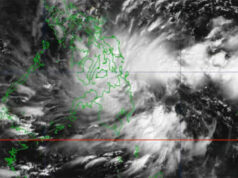BSP seen to leave key rate untouched
THE central bank will likely keep its key policy rate untouched at its policy review on Thursday, a majority of economists polled by BusinessWorld said.
Eleven out of 16 economists in the poll expect the Bangko Sentral ng Pilipinas (BSP) to keep its benchmark interest rate steady at the Monetary Board’s fourth policy-setting review this year.
Analysts cited recent signals of a likely pause in easing from BSP Governor Benjamin E. Diokno.
“Steady policy rates in the meantime. This is because the BSP will be inclined to let the last 50 bps (basis point) cut to settle into the system due to lag effects of monetary policy,” Security Bank Corp. Chief Economist Robert Dan J. Roces said, referring to the easing done by the Monetary Board in its June 25 meeting.
Mr. Diokno last week said they are not inclined to move sooner on further cuts as the previous ones appear to have not been digested by the market yet. He said the current monetary policy stance may possibly be maintained for the next few quarters, given the initial moves were in anticipation of the scope of the crisis.
The central bank this year has already shaved rates by 175 bps, reducing the overnight reverse repurchase, lending, and deposit rates to record lows of 2.25%, 2.75%, and 1.75%, respectively. The latest easing was fired off on June 25, when the Monetary Board cut rates by 50 bps.
With the record-low overnight reverse repurchase facility at 2.25% and the July inflation of 2.7% leaving the country under a negative real interest rate environment, Rizal Commercial Banking Corp. Chief Economist Michael L. Ricafort said it has become “fundamentally tougher to further cut local policy rates at the moment.”
The direction of the coronavirus disease 2019 (COVID-19) pandemic and its impact on the economy remains the crucial factor for the BSP’s decision this week, said Suhaimi Bin Ilias, chief economist at Maybank Investment Bank.
“We think BSP is also keeping some dry powder for future downside risk to the economy rather than firing all bullets in its arsenal now. At this juncture, public health policy measures are more crucial to contain COVID-19 and help in the lockdown decision,” he said.
The Monetary Board has three more policy-setting meetings left this year, all in the fourth quarter — Oct. 1, Nov. 19, and Dec. 17.
The country plunged into a recession after gross domestic product (GDP) shrank by 16.5% in the second quarter, as the coronavirus pandemic and subsequent lockdowns hampered economic activity.
The government now expects full-year GDP to contract by 5.5%.
Meanwhile, five analysts are betting on a rate cut of around 25-50 bps at this Thursday’s meeting, due to the lag in fiscal response and the wider GDP contraction in the second quarter.
“Despite comments from the BSP governor to the contrary, we expect the central bank to do more to support growth at its meeting this Thursday… Fiscal support has so far been lackluster,” said Alex Holmes, economist at Capital Economics.
Mr. Holmes is expecting a 50-bp cut that will reduce the key policy rate to 1.75%.
The Bayanihan II bill is still being finalized by the Bicameral Conference Committee, which agreed on Friday to allocate P162 billion in funding for the stimulus measure.
A larger P1.3-trillion stimulus measure under the ARISE (Accelerated Recovery and Investments Stimulus for the Economy) bill is still pending at the Senate, but economic managers have said it cannot be funded without new sources of revenue.
Makoto Tsuchiya, economist at Oxford Economics, said the still benign inflation environment also provides a “favorable environment for the BSP to keep monetary policy accommodative.”
“Barring an unexpected shock to inflation, the BSP is likely to loosen monetary policy further through both RRR (reserve requirement ratio) and policy rate cuts in order to provide more support to the economy,” he said, adding the RRR cut will be tricker to predict, given ample liquidity in the system.
The Monetary Board is authorized to reduce RRR by up to 400 bps this year. It has already slashed reserve requirements for big banks by 200 bps in April to 12% and by 100 bps for smaller lenders that brought down RRR for thrift and rural lenders to three percent and two percent, respectively, in July. — Luz Wendy T. Noble




